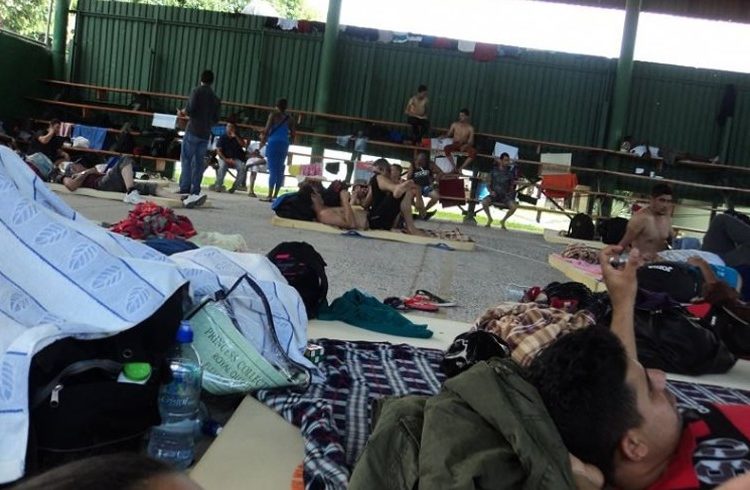The more than 6,000 Cuban migrants who have been stuck in Costa Rica waiting to continue their trip to the United States will be able to do so through Guatemala as of the first week of 2016.
The member nations of the Central American Integration System (SICA) have reached an agreement to open an “exceptional, secure and organized path” through Guatemala for these Cubans.
The first migrants arrived in Costa Rica in mid-November, hoping to cross the Nicaraguan border in their journey to their final destination, the United States, but when the first group entered Nicaragua, they were sent back to Costa Rica. The border has been closed for them ever since.
This new announcement will put an end to the uncertainty they have experienced over the last month, as more of them have been accumulating in shelters in Costa Rica.
The approved humanitarian pilot plan to transfer the Cubans will allow them to reach the United States through Mexico.
The official announcement states that they will travel to El Salvador by plane, from where they will head up to Mexico by bus.
The Costa Rican Foreign Minister, Manuel Gonzalez, said that, unfortunately, it was not possible to make progress any faster during this time of the year.
He said that the migrants will pay for their plane tickets, but did not add any other details about their trip through Guatemala.
He didn’t mention the number of people that would be included in the first group either.
In the next few days, officials from the countries involved will be defining the technicalities of the process to guarantee the security of the migrants.
Gonzalez pointed out that this was an “absolutely extraordinary” solution for those who are already in Costa Rican territory, and that it should not be interpreted as a possibility for future migration plans because his country does not have the capacity to welcome and give transit visas to more people.
A partial solution
This solution for the 8,000 Cubans in Costa Rica does not contemplate the thousands who have been arriving in Panama over the last few weeks, as part of the uncontrollable wave that is fleeing Cuba to the United States through Central America.
According to Panamanian Vice President, Isabel de Saint Malo, her government is committed to guaranteeing food and security for the migrants in her country.
Panamanian President Juan Carlos Varela disposed that the 700 Cuban migrants stuck at the border with Costa Rica be sent to hotels until they can continue their trip to the United States, according to a report by EFE.
The situation is more complex in Panama, where there are 1,200 Cubans stuck in Puerto Obaldia, a coastal village on the Colombian border, where a health emergency has risen, according to local authorities.
Like Costa Rica, Panama will be providing aid to the Cuban migrants. The difference is that, so far, they have not granted them transit visas, and if the migrants continue to accumulate there, it’s not impossible that in the next few weeks a crisis could unleash there.
What happens next?
Mexico announced that they will not turn their backs on the Cuban migrants.
According to a report published in El Universal on Saturday, the Mexican government has reiterated that they will let the Cubans pass through Mexico to reach the United States, where “they will have the protection of the Cuban Adjustment Act.”
Would that be a violation of the country’s immigration regulations? Yes. Would it go against the agreement on migration recently reached with Cuba? It would as well.
But this wouldn’t be the first time Mexican officials turn a blind eye on irregular migratory issues. During the 2015 fiscal year (September 2014-September 2015) close to 50,000 Cubans entered the United States illegally, and two thirds of them did so through Laredo – 28,371, according to the Pew Research Center.
Mexico’s position towards this new wave of Cubans is, therefore, nothing new: they will grant them temporary permits to allow them to move legally through the country for 30 days.
Will this be the end of the Cuban exodus through Central America?
The governments of the region have said that they will take action against human traffic and coyotes. They also announced the enforcement of a law that will severely prosecute this kind of illegal activity.
The primary conditions that make Cubans leave the country are far from disappearing, however: on the one hand, there’s the wet feet/dry feet policy and the Cuban Adjustment Act kept by the United States, which makes of this country an attractive destination for Cubans; and on the other hand there’s the economic crisis faced by many families on the island, who don’t see any options of development for their personal projects in the near future.










